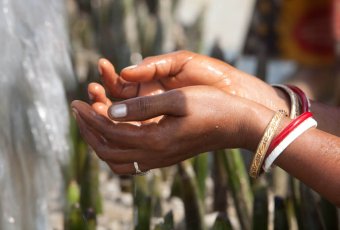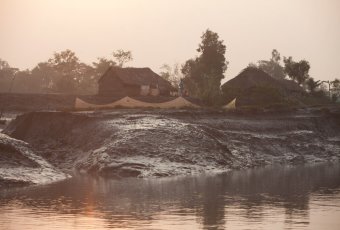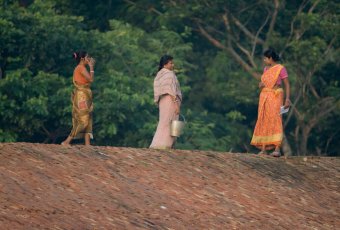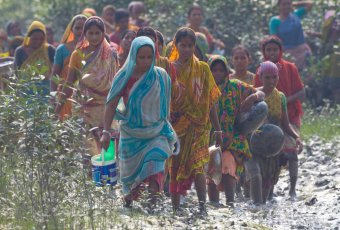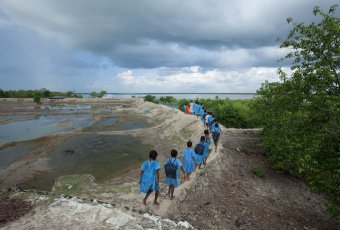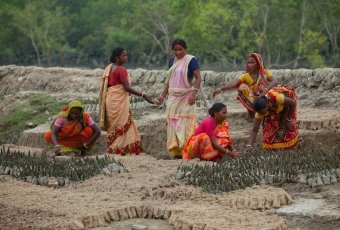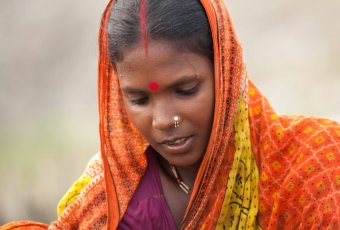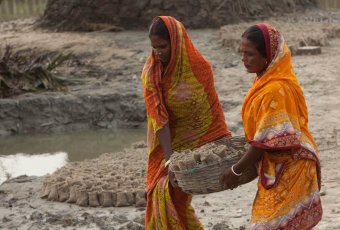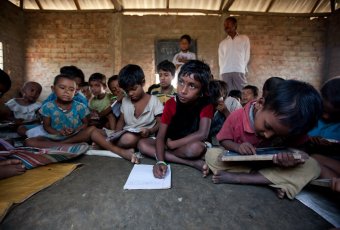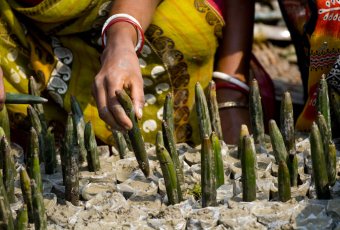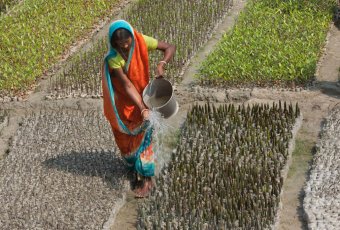The context
The Sundarbans are an archipelago of islands located in the State of West Bengal in eastern India in the Ganges Delta, stretching into southern Bangladesh. They form the largest contiguous estuarine mangrove forest in the world. Yet its mangroves are rapidly disappearing due to climate change. Experiencing sea-level rise faster than any other place on Earth, the Sundarbans have already lost more than 28 percent of its land in the past 40 years due to global warming.
Livelihoods-NEWS mangrove restoration project in the Sundarbans, India
The Indian NGO, Nature Environment and Wildlife Society (NEWS) and Livelihoods are working together with the local communities of the Sundarbans to restore these shrinking mangrove forests. Launched in 2011, the project planted more than 16 million mangroves to strengthen the existing man-made embankments that protect the communities’ homes and farmlands from flooding. It also restored local biodiversity, as mangroves are nurseries for fish, mollusks, and crustaceans, which brings additional economic and nutritional value to the communities that are impacted by this project.
The social and environmental impacts of the project
Livelihoods-NEWS mangrove restoration project in the Sundarbans is ensuring the safety of the local population by reinforcing the existing dykes since mangroves are among the strongest natural barriers against cyclones and hurricanes. The new mangroves also produce timber and increase food supply, as villagers are now able to earn extra income by selling the crabs, shrimps, and molluscs mollusks that mangrove forests harbor. Thanks to the restoration of 5,011 hectares of mangroves launched in 2011, fish, birds, shrimps, and other crustaceans are back. Today, the project area counts more than 500 crab collectors instead of 50 before the project was launched, in one afforested island alone and a big bird colony.
These plantations will store 700,000 tonnestons Co2 equivalent over the project’s life span of 20 years.
A brand to develop income generating activities for the farmers: Badabon Harvest
In 2018, Livelihoods helped NEWS create Badabon Harvest brand with a group of marginalized farmers to help them improve their revenues through livestock breeding, the commercialization of organic products, improvement of agricultural practices and fish farming. By generates economic opportunities for the farmers by linking to markets such as Kolkata, this brand helps couple nature conservation with economic benefits to the farmers, thus complying with several Sustainable Development Goals.
Learn more about Badabon Harvest and the economic benefits of the project:
https://www.livelihoods.eu/interview-with-ajanta-dey-news/
10 years later, mangroves played their bio-shield role: Amphan cyclone that hit Bengal, Eastern India on May 20th, 2020 is reported to be the most devastating tropical storm in the region since 1999. With speed winds reaching up to 265 kilometers per hour and heavy rainfall, the cyclone severely impacted Kolkata and the Sundarbans. But the 5, 011 hectares of mangroves restored under Livelihoods Carbon Funds model are intact and acted as a bio-shield, protecting the embankments and local communities. Click to learn more: https://www.livelihoods.eu/amphan-sundarbans-india-mangroves-bio-shield/ |
Our Partners
- NEWS: http://www.naturewildlife.org/
- FFEM: https://www.ffem.fr/en
Learn more:



